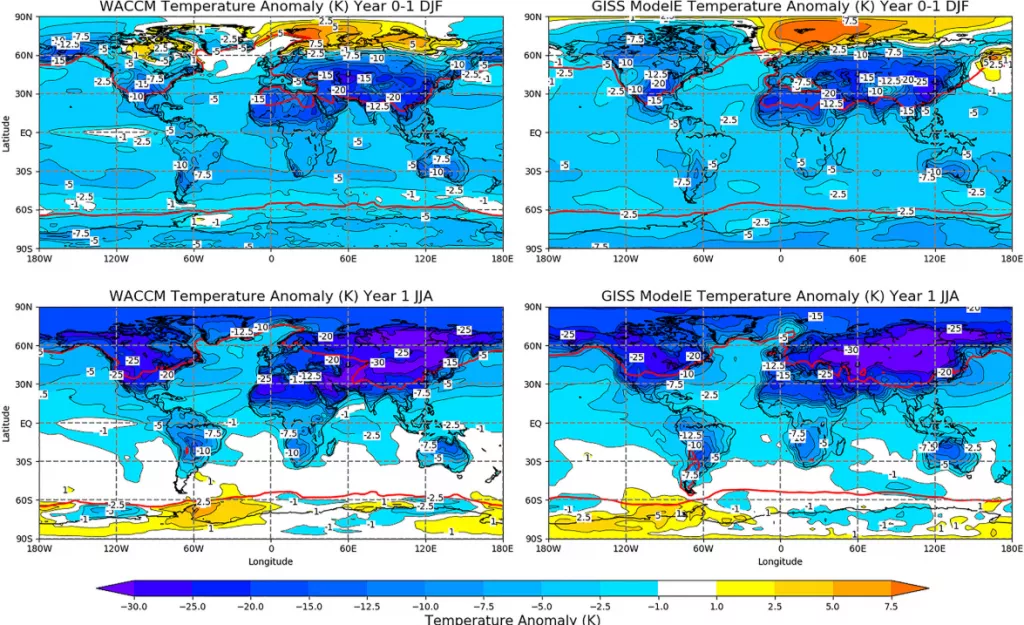
I. Introduction
The threat of nuclear war remains one of humanity’s gravest dangers. Beyond the immediate devastation from explosions and radiation, a nuclear conflict could unleash a catastrophic environmental phenomenon known as nuclear winter. This event would cause a dramatic and prolonged global cooling by injecting massive amounts of soot and smoke into the atmosphere, blocking sunlight and disrupting the Earth’s climate system. Understanding the weather and climate changes following such an event, as well as how societies can mitigate and adapt, is critical for global preparedness.
II. The Science of Nuclear Winter
Nuclear winter arises when widespread firestorms triggered by nuclear explosions produce enormous plumes of black carbon aerosols (soot). These particles ascend into the stratosphere, where they can persist for months or years because there is little rainfall at that altitude to wash them out. The soot forms a veil that absorbs and reflects sunlight, leading to severe reductions in solar radiation reaching the Earth’s surface. As a result, surface temperatures can plunge dramatically—far beyond any natural variation in climate—inducing a global cooling that lasts for years.
Early research by Turco et al. in the 1980s first revealed this phenomenon, and modern climate models have since refined estimates of the extent and duration of cooling, suggesting temperature drops between 7 and 20°C globally, with even more severe effects at high latitudes.
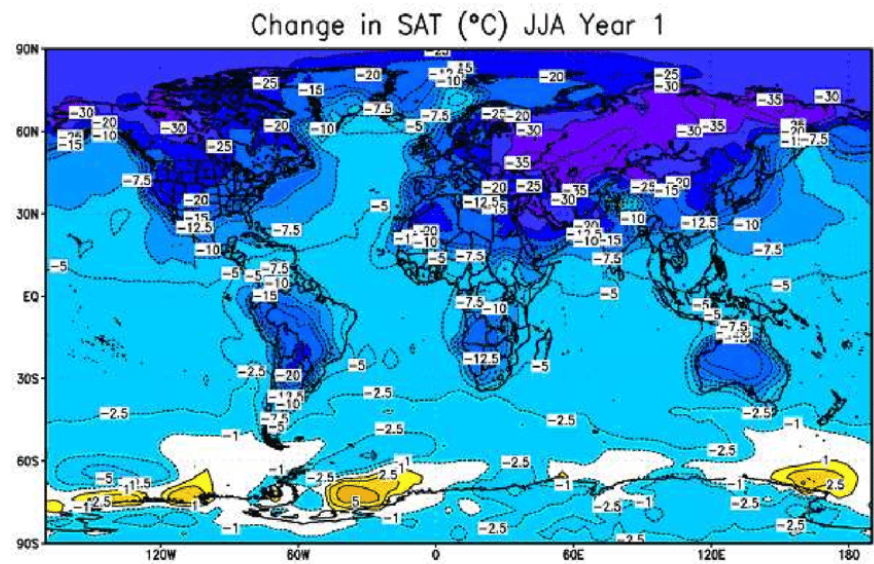
III. Atmospheric and Climatic Changes After Nuclear War
The injection of soot causes a cascade of atmospheric changes. One of the most significant is a drastic decline in surface temperatures worldwide, potentially leading to years of below-freezing conditions in some areas, including summer months. The reduced sunlight also disrupts the hydrological cycle, causing widespread droughts and altering rainfall patterns, including weakening or collapse of monsoon systems vital for many regions’ agriculture.
Moreover, changes in atmospheric circulation, such as a strengthened polar vortex and shifts in the jet streams, could cause abnormal weather patterns including prolonged cold spells, increased storm activity in some areas, and unusual wind patterns. The ozone layer may also be depleted due to nitrogen oxides produced by nuclear detonations, potentially increasing harmful ultraviolet radiation at the surface despite the lowered sunlight.

Source: https://agupubs.onlinelibrary.wiley.com/doi/10.1029/2019JD030509
IV. Global Weather Disruptions and Their Impacts
The resulting weather would be harsh and erratic. The growing seasons across much of the globe would shorten drastically due to extended frost periods and insufficient sunlight. Extreme cold waves would become more frequent and intense, and agricultural regions would suffer from both cold and drought stresses. Ocean circulation could slow, further destabilizing climates and marine ecosystems.
In many areas, especially in temperate and tropical zones, the combination of cold, darkness, and lack of precipitation would make farming nearly impossible. This would cause an unprecedented collapse in global food production, threatening billions of people with starvation.
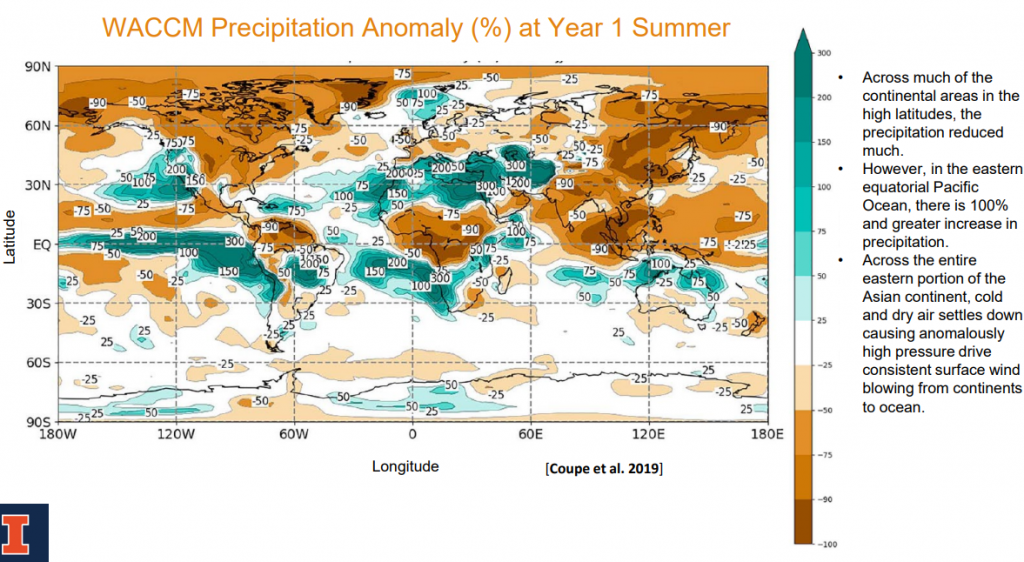
Source: https://courses.physics.illinois.edu/phys280/sp2020/Lectures/Nuclear%20Winter%20May%205%202020.pdf
V. Ecological and Agricultural Catastrophe
Agriculture depends heavily on stable climate conditions. The loss of sunlight and sharp temperature drops would prevent crops from growing effectively. Staple foods like wheat, corn, and rice could fail across major producing regions. The resulting famine risk is one of the most severe threats posed by nuclear winter.
Natural ecosystems would not be spared; forests, grasslands, and wetlands would suffer mass die-offs, disrupting biodiversity and ecological services. Soil degradation and potential desertification could follow, complicating recovery efforts for decades.
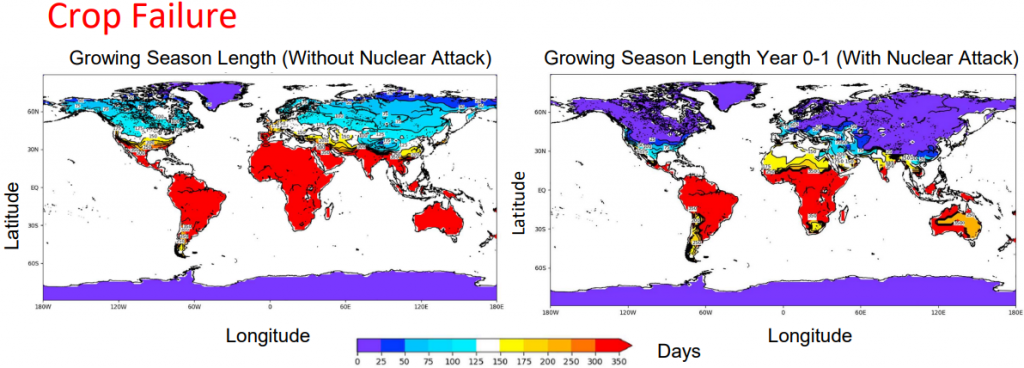
Source: https://www.psu.edu/news/research/story/how-would-nuclear-winter-impact-food-production
VI. Human Health and Societal Consequences
Beyond the immediate effects of nuclear blasts, fallout, and radiation sickness, the long-term climatic impacts would cause widespread human suffering. Malnutrition and starvation would surge due to food scarcity, and weakened populations would face increased vulnerability to infectious diseases.
Healthcare systems, already strained or destroyed by war, would struggle to cope. Social order might break down as resources dwindle, leading to population displacement, migration crises, and conflicts over scarce essentials. The psychological toll, including trauma and despair, would be profound and widespread.
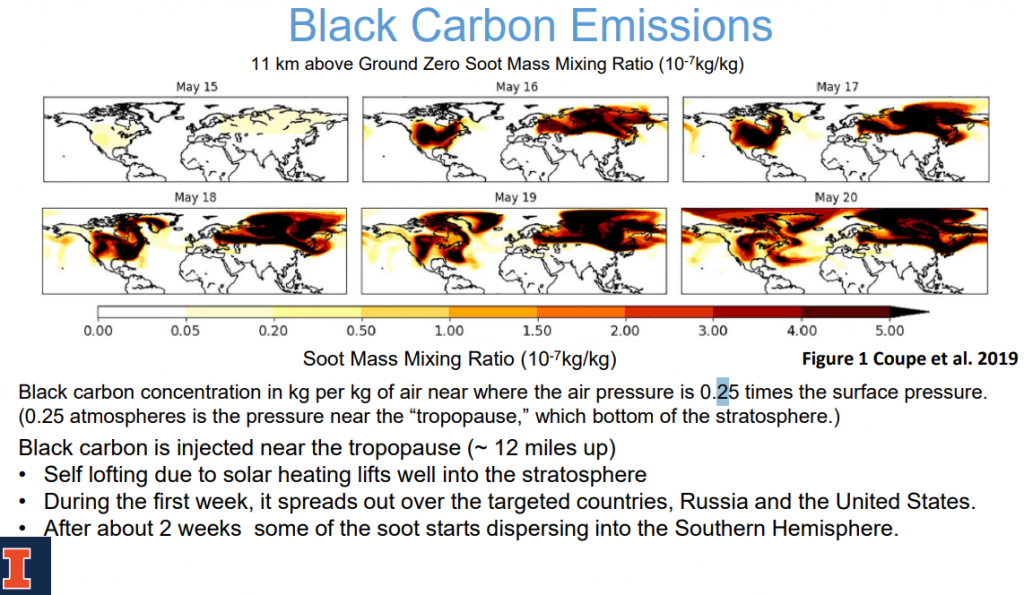
Source: https://courses.physics.illinois.edu/phys280/sp2020/Lectures/Nuclear%20Winter%20May%205%202020.pdf
VII. Advances in Nuclear Winter Modeling
Since the initial studies in the 1980s, improvements in atmospheric science and climate modeling have enhanced our understanding of nuclear winter. Modern Global Climate Models (GCMs) simulate the complex interactions between soot aerosols, atmospheric circulation, and ocean currents more accurately, confirming the potential for severe global cooling even from limited regional nuclear conflicts.
However, uncertainties remain, particularly in predicting the precise amount of soot that reaches the stratosphere, its atmospheric lifetime, and the nuanced regional climate responses. Continued research is essential to refine risk assessments.
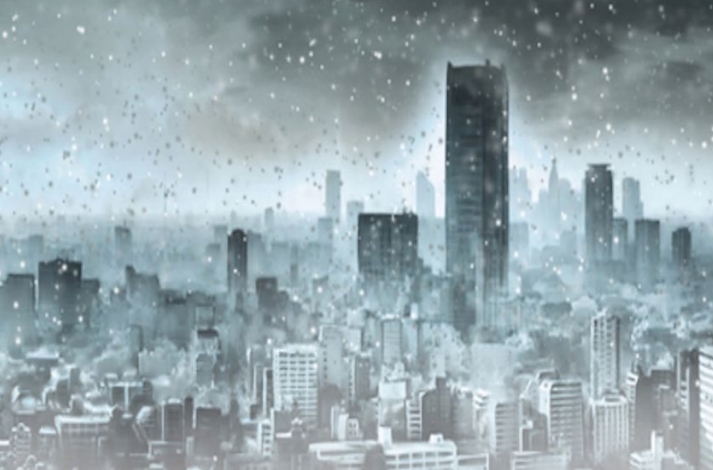
Illustration picture: https://courses.physics.illinois.edu/phys280/sp2020/Lectures/Nuclear%20Winter
VIII. Regional Variability and Uncertainties
The severity of climatic effects varies by region. High-latitude areas, such as the Arctic and northern continents, would experience the coldest and most prolonged temperature drops, while tropical zones might see smaller temperature declines but face significant drought due to disrupted rainfall.
Topography, proximity to oceans, and prevailing wind patterns influence local climate responses. Additionally, different nuclear war scenarios—ranging from a large-scale global conflict to a limited regional exchange—produce varying levels of atmospheric soot and therefore differing climatic impacts.
IX. Mitigation and Adaptation Strategies
Prevention remains the most effective strategy: nuclear disarmament and conflict avoidance must be pursued aggressively to eliminate the root cause of nuclear winter.
However, preparedness for survival is vital. Stockpiling food, water, and medical supplies is critical to withstand the immediate aftermath. Development of controlled-environment agriculture, including greenhouses and vertical farming, can sustain food production when outdoor farming fails.
Communities must build resilient infrastructure, including shelters capable of protecting inhabitants from cold and radiation. Energy supplies, particularly from renewable sources, should be diversified to ensure heating and electricity in disrupted scenarios. International cooperation will be crucial to coordinate resource sharing, humanitarian aid, and recovery efforts.
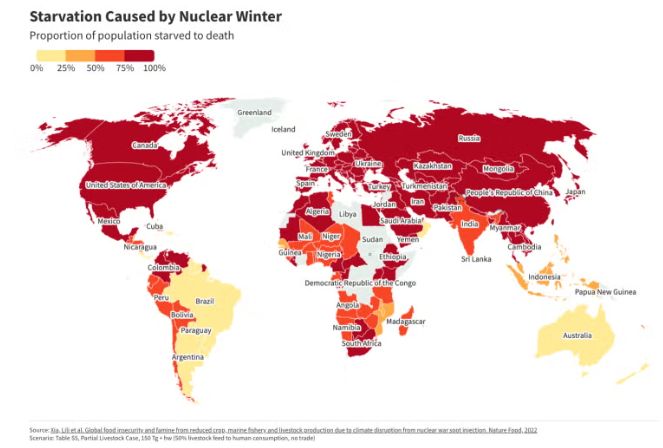
X. International Policy and Cooperation
Preventing nuclear winter requires global political will for nuclear arms control and conflict de-escalation. International bodies such as the United Nations must strengthen mechanisms for early warning, conflict resolution, and nuclear nonproliferation.
Emergency response frameworks should include detailed nuclear winter scenarios, involving rapid mobilization of aid and resources. Transparent sharing of atmospheric and climatic data post-conflict will help tailor relief efforts.
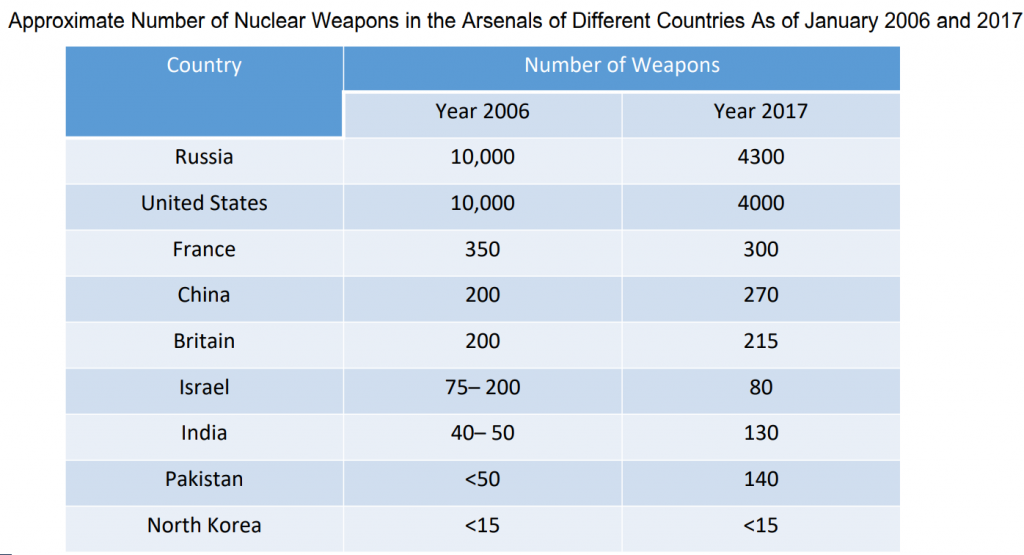
Source: https://courses.physics.illinois.edu/phys280/sp2020/Lectures/Nuclear%20Winter%20May%205%202020.pdf
XI. Emergency Preparedness and Societal Resilience
At the local level, public education on nuclear winter risks and survival tactics is essential. Training emergency workers and healthcare providers for mass casualty and famine scenarios will improve crisis response.
Communities must plan for energy-efficient heating, water purification, and food storage. Communication networks resilient to infrastructure damage will be vital for maintaining social cohesion.
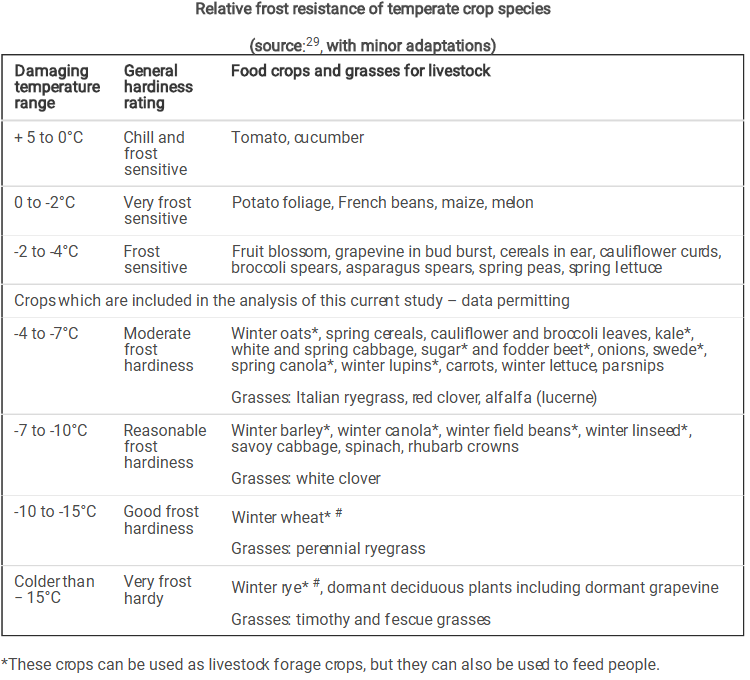
XII. Technological Innovations
Technologies such as renewable energy systems, advanced water filtration, and indoor farming will be crucial for post-nuclear survival. Drones and satellites can assist in damage assessment and aid distribution. Protective gear and shelters designed to mitigate radiation and cold exposure will save lives.
XIII. Ethical and Psychological Dimensions
The nuclear winter threat underscores the ethical imperative to eliminate nuclear weapons. Supporting survivors’ mental health and rebuilding trust will be as important as physical recovery.
Effective scientific communication can raise awareness and counter misinformation, encouraging public support for disarmament and preparedness.
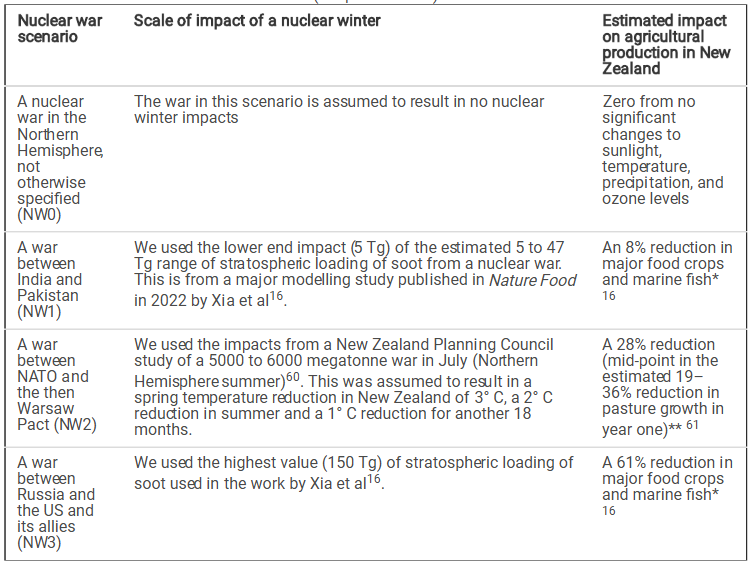
XIV. Conclusion
Nuclear winter represents an existential threat that could reshape the planet’s climate and jeopardize the future of human civilization. The potential for devastating cooling, agricultural collapse, and societal disruption calls for urgent attention from scientists, policymakers, and citizens alike.
While prevention through disarmament remains paramount, robust strategies for mitigation, adaptation, and recovery are essential to safeguard humanity should nuclear conflict ever occur.
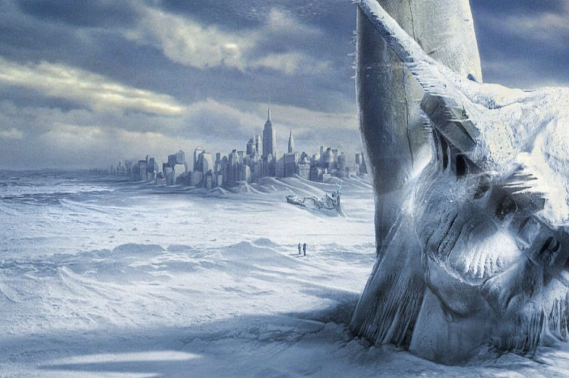
Illustration picture: https://courses.physics.illinois.edu/phys280/sp2020/Lectures/Nuclear%20Winter%20May%205%202020.pdf
XV. References
- Turco, R.P., Toon, O.B., Ackerman, T.P., Pollack, J.B., & Sagan, C. (1983). Nuclear Winter: Global Consequences of Multiple Nuclear Explosions. Science, 222(4630), 1283-1292.
- Robock, A., Oman, L., & Stenchikov, G.L. (2007). Nuclear winter revisited with a modern climate model and current nuclear arsenals: Still catastrophic consequences. Journal of Geophysical Research, 112(D13).
- Mills, M.J., Toon, O.B., Lee-Taylor, J., & Robock, A. (2014). Multi-decadal global cooling and unprecedented ozone loss following a regional nuclear conflict. Earth’s Future, 2(4), 161-176.
- National Research Council (1985). The Effects on the Atmosphere of a Major Nuclear Exchange. National Academy Press.
- Robock, A. (2007). Nuclear winter: Doomsday scenarios revisited. Bulletin of the Atomic Scientists, 63(3), 49-57.


























